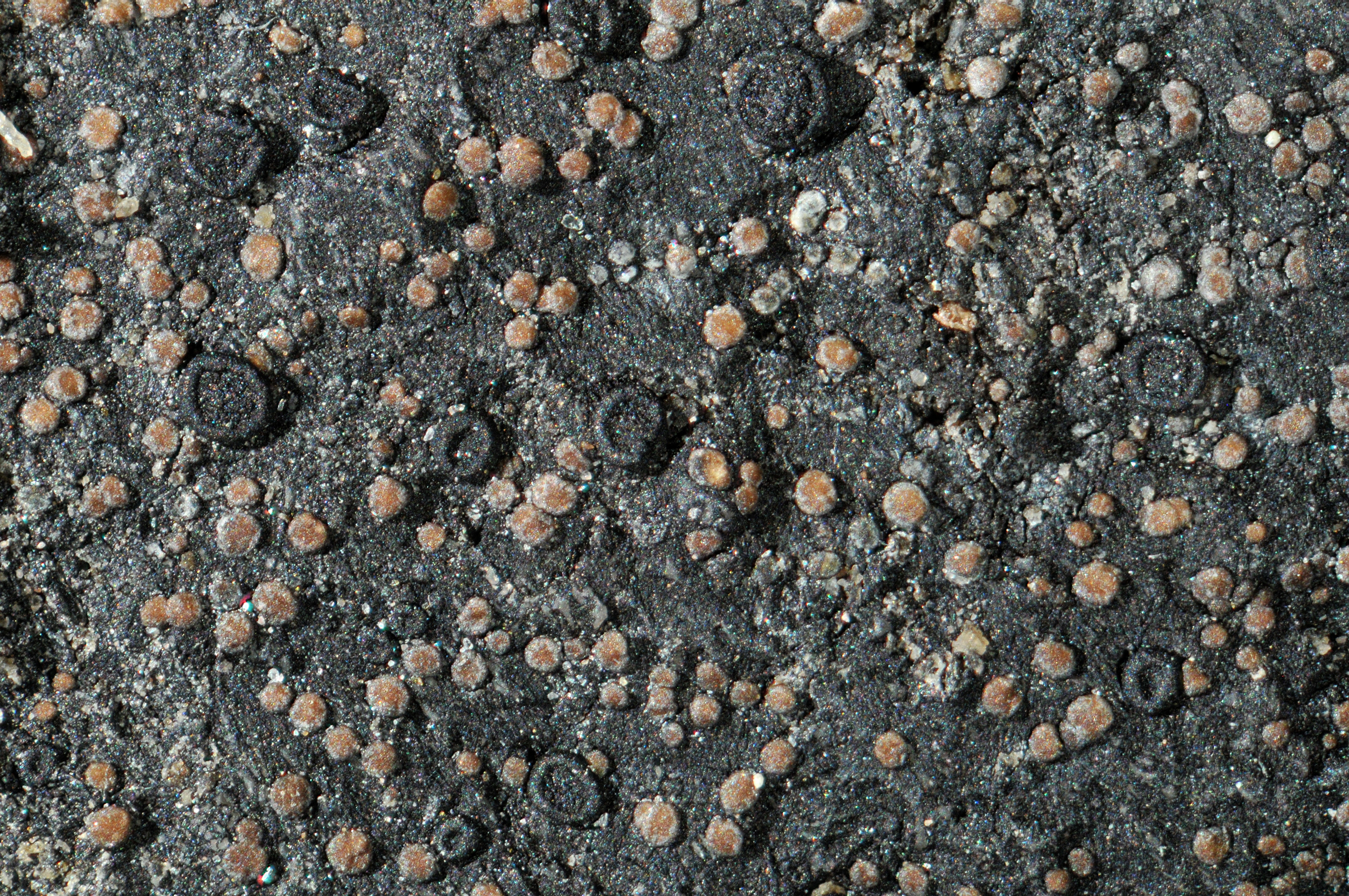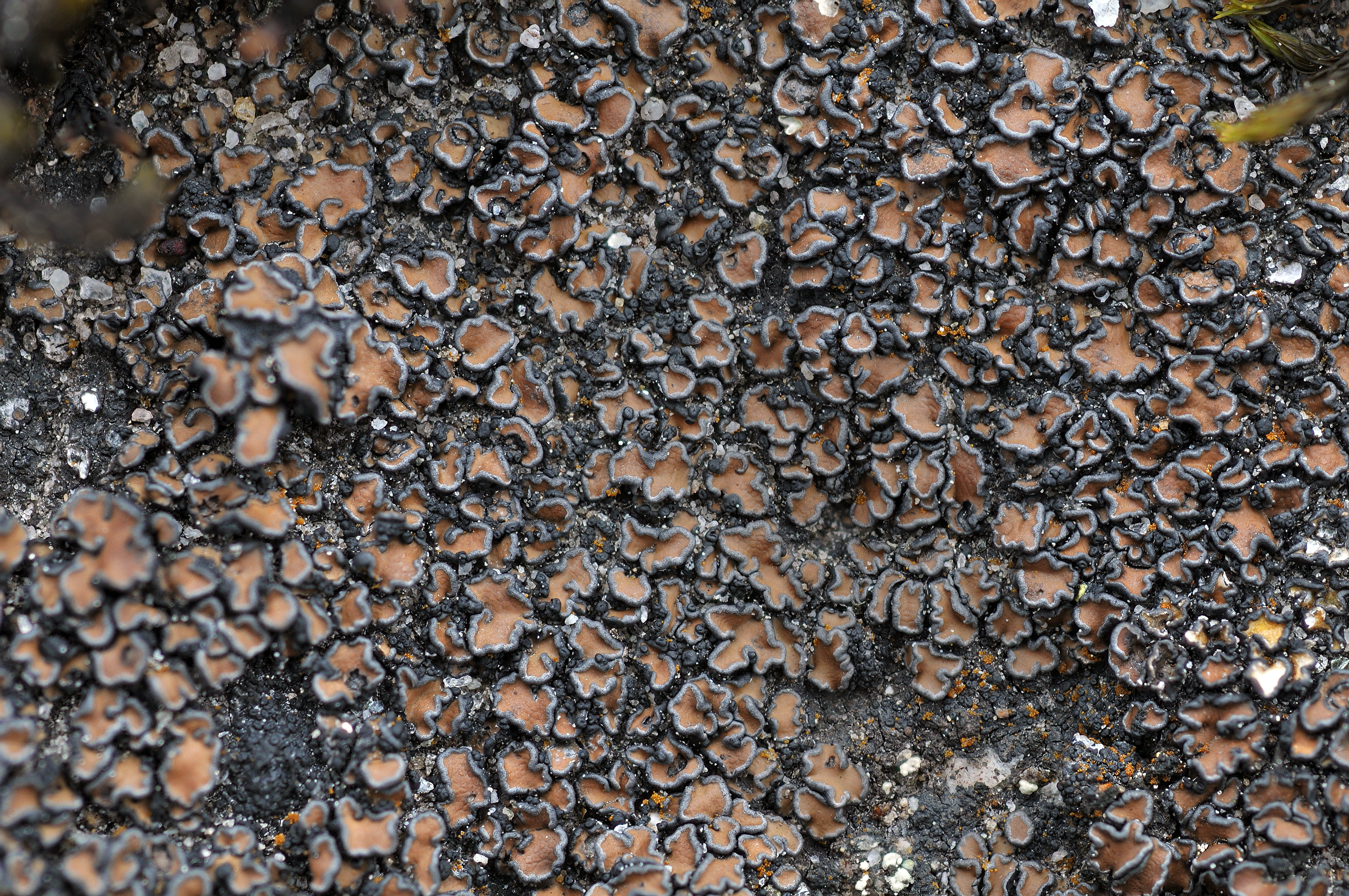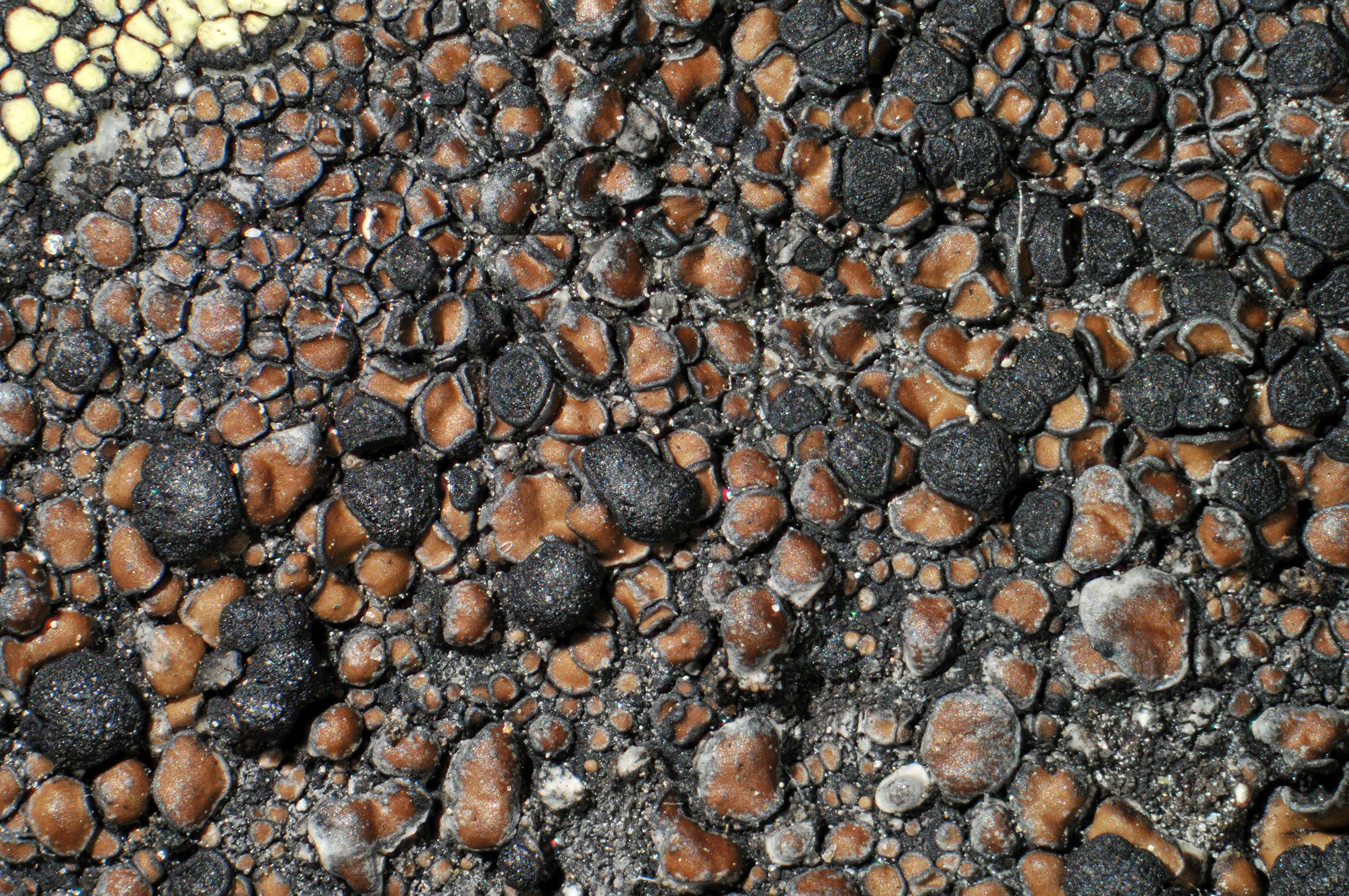Rhizocarpon leptolepis
- Innhold
- Morphology
- Chemistry
- Habitat
- Comment
- Look-alikes
Morphology
Thallus areolate, up to 10 cm diam.; hypothallus well developed, black; areolae up to 0.5 mm diam., medium brown, usually somewhat shiny, with a medium grey to dark grey margin, scattered to contiguous, more or less orbicular, plane to concave, slightly peltate; medulla KI–. – Apothecia up to 0.8 mm diam., black, epruinose, orbicular, plane to moderately convex, narrowly to indistinctly marginate; excipulum brownish black in the rim, pale brown the inner part, containing crystals dissolving in K, brown pigment K+ red; hypothecium dark brown, K–; hymenium colourless to faintly green; epihymenium olivaceous brown, containing crystals dissolving in K, K– (turning more brightly green); ascospores 8 per ascus, eumuriform, soon becoming dark greenish brown, 28–38 × 14–21 µm. – Conidiomata not seen.
Chemistry
Confriesiic acid; spot tests: medulla PD–, K–, C–.
Habitat
On steep to overhanging, often moist or shady siliceous rock walls. Sparingly collected.
Comment
The species resembles R. bolanderi and R. rittokense morphologically, but the areolae are larger in both those species. The former also differs in having larger ascospores, only 2 per ascus, and the latter in having smaller, 1-septate ascospores. The species are also chemically distinct: the rare compound confriesiic acid is not known from any other species in the genus.


